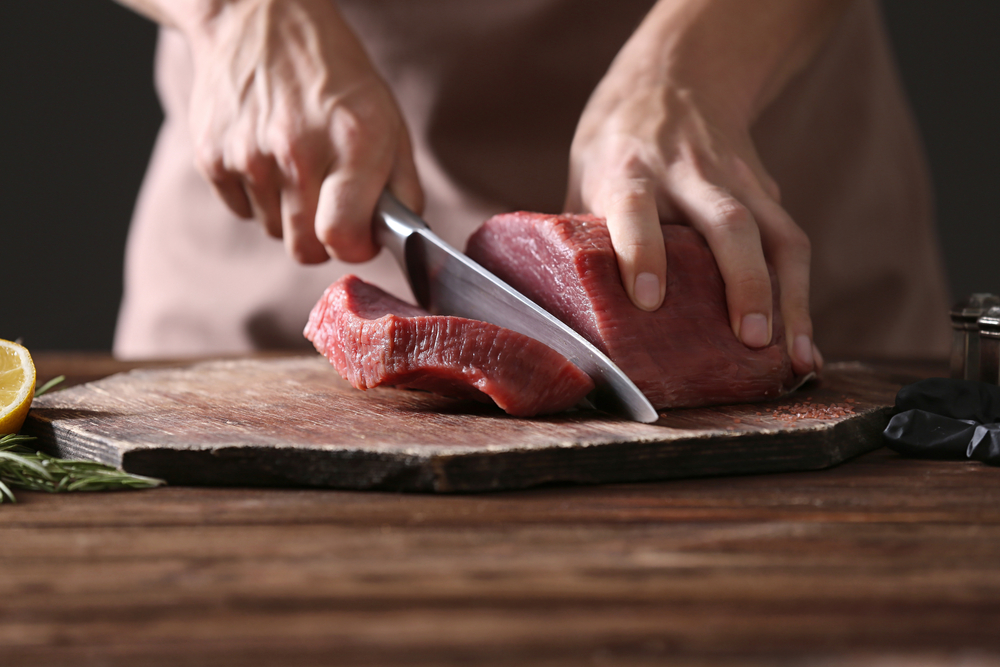Written by Tina Homolik
With summer right around the corner, everyone is looking forward to some barbeque heaven. Warm weather and good company are only made better by a juicy hot dog or hamburger right off the grill. Before enjoying the wonders of grilled meat, however, you must brave a tidal wave of meat options with their confusing labels, like “farm-raised,” “organic,” and “free-range.” Inevitably, consumers wonder if they should pay attention to these words.
Meat from the land and sea are rich in proteins, vitamins, and minerals, but this doesn’t mean all meats are created equal. Knowing what is really the healthiest and best-tasting option requires looking beyond the packaging rhetoric. All those labels may not actually be telling you the truth about your meat. Here is a break down of what those labels mean and what you should be looking for when buying meat:
Farm-raised: When choosing poultry, the label “farm-raised” is not reason enough to grab it off the shelf. All poultry are “farm-raised.” When seen on a restaurant menu, this usually refers to poultry from a local farm. Farm-raised fish are a different story. Wild-caught fish are just that: fish caught out in their natural habitat by fisherman. It is important to know, however, that some wild-caught fish are caught in the wild while in their infancy and then raised and fattened up in a “farm-raised” habitat.
Farm-raised fish are fish that are grown in an aquacultures, or aquafarms. These fish are fed a similar diet to those that are wild-caught, which is typically a diet high in algae; this will help the fish provide customers with the Omega-3’s they desire. The most important factor here is what country the fish comes from. Some countries, like China, have very overpopulated aquafarms, and you may be getting poor-quality fish with little nutritional value. When reading the label, “wild-caught” is your best option. Make sure the fish is from the United States, not just distributed in the US. If wild-caught is not an option, your next best option is farm-raised in the US.
Natural: According to the USDA, a “natural” product has no artificial ingredients, coloring ingredients, or chemical preservatives, and is minimally processed. Buying “natural” meat can also mean avoiding preservatives. An example would be nitrites in bacon and hot dogs, which doesn’t occur naturally in meat. Another would be coloring added to salmon to preserve its bright pink hue. It’s best to avoid these additives, so “natural” is worth looking for on a label. By law, companies have to explain on the packaging why the meat is natural, so look for that, too.
Locally grown: There is no regulation on what can be labeled as “local meat” or “locally grown.” Typically “local” refers to within 100 miles, but it can sometimes mean that the meat is just from somewhere in the state or local region. It would be better to buy sustainable or local sustainable mean and produce than buying “local”. Meat from sustainable local farms is often sourced closer to where the consumer purchases it, and these farms use minimal machinery and processing. This also means there is less of a need for preservative additives. You can sometimes find real local meat from local butcher shops.
Cage Free/Free Range: These terms can be seen on eggs, chicken, and turkey. “Cage free” sounds like an ideal choice, but it can sometimes mean that instead of caging the poultry, it was housed in a barn or other enclosed space with other poultry of its kind. “Free range” is a slightly better option; it means that the poultry had some form of outside access. There is no regulation on this, and outside access could consist of just a small dirt or mud patch outside of the coop. The term you should be looking for instead is “pasture-raised,” which refers to poultry that live on a farm and are free to graze and walk around. The best way to access poultry that is pasture-raised is to buy from a local butcher shop, get eggs from a local farmer, or even have your own chickens for egg use.
Grass Fed/Vegetarian Fed: Labeling meats as “vegetarian-fed” or “grass-fed” can mean a few different things. Typically, the animal is given the opportunity to graze on natural food sources, such as grass. The animal may also be fed a vegetarian diet, such as corn or other vegetables. Many steers are raised on corn feed and then switch to grass and grazing before they are butchered. Grass-fed beef tastes different than grain-fed beef, and it also has a different nutritional profile. Research shows that grass-fed beef has less fat and calories, a better omega-3/omega-6 profile, and lower levels of detrimental fatty acids. Some prefer the taste of grain-fed beef, as it is generally what people are most familiar with, and it is usually the cheapest.
Beef Rank
The USDA has 8 quality levels for beef:
- Prime: Generally only found in restaurants.
- Choice: Less marbling than prime meat, but still excellent.
- Select: Leaner than the two higher grades.
- Standard: What you usually get with “store brand” meat.
- Commercial: Similar to Standard.
- Utility: Seldom sold in stores. This is what is used to make ground beef and processed products like hot dogs.
- Cutter: Same as Utility.
- Canner: Same as Utility.
Organic: “Organic” is the most regulated label on meat. It is expensive for a company to grow organic meat; it is a long process to set up an organic farm, one that is checked often by the USDA. In order for meat to be labeled as “organic” by the USDA, animals have to be raised in living conditions that accommode their natural behaviors. This would mean animals are allowed to graze and pasture. They must be fed 100% organic feed and forage, and they cannot be given antibiotics or hormones. When choosing meat, “organic” is a label worth looking for and purchasing.
So next time you head to the grocery store, or even better a local butcher shop, remember you can buy good-quality meat by being conscious about the labels. Being educated on your meat is not only beneficial to you and your health but also to our environment, local farmers, and—of course—animals. Now you can enjoy that juicy summer meat knowing you made the best decision for all.
Other Terms
Certified: If meat is “certified,” it means that the USDA’s Food Safety and Inspection Service and the Agriculture Marketing Service have officially evaluated the meat for “class, grade, or other quality characteristics.”
Fresh Poultry: This means the poultry has never been below 26 °F.
No Hormones: Hormones are not allowed in raising hogs or poultry, so seeing this label on chicken doesn’t mean much. Look for this on beef packaging, however.
Bio:
Tina Homolik has a BS in School Health Education from UVU. She is a public school health teacher who loves educating individuals and families on how to live a healthier lifestyle. In her free time, she loves running and cooking healthy meals with her family.


No Comment